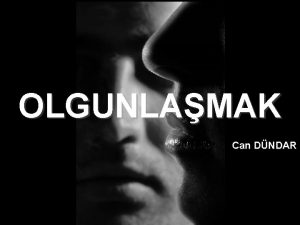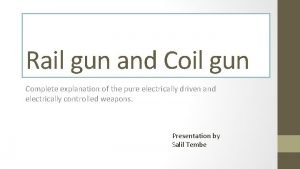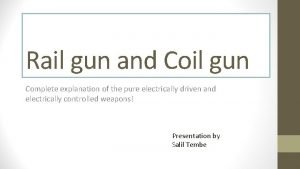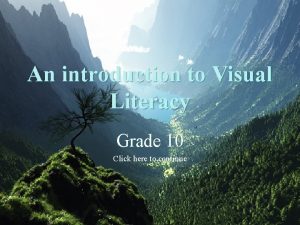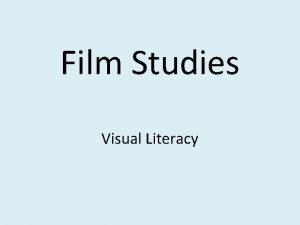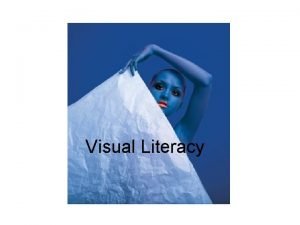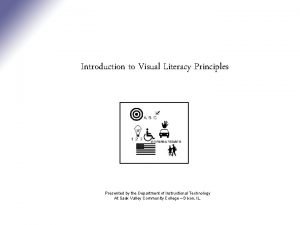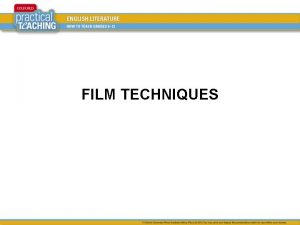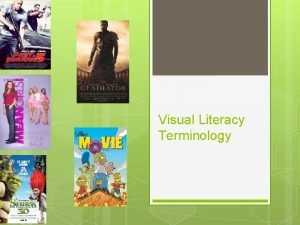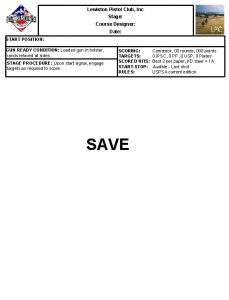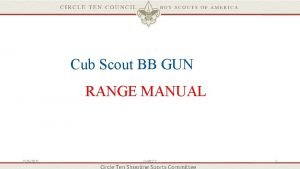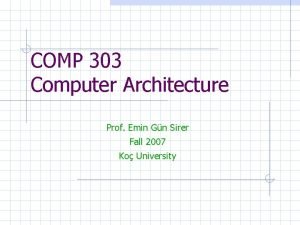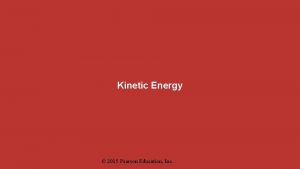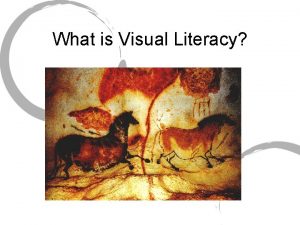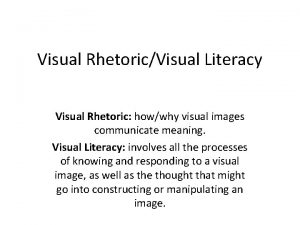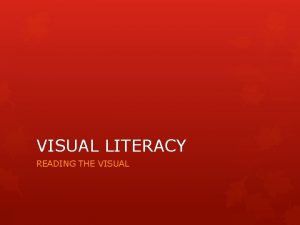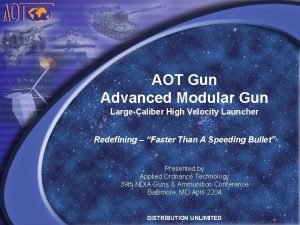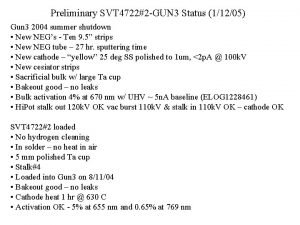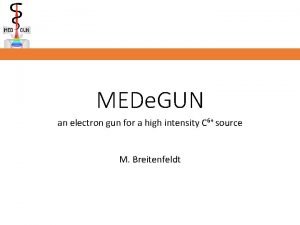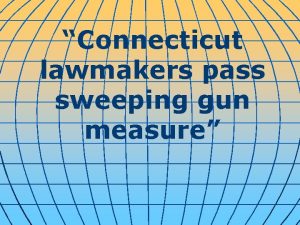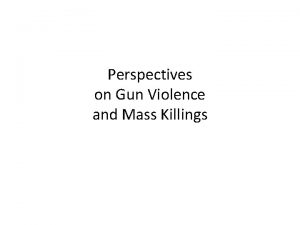gun Literacy Approaches to developing literacy in Visual



















- Slides: 19

gun Literacy Approaches to developing literacy in Visual Arts VADEA Workshop 15 th May 2010 Karen King, Caroline Chisholm College

Literacy and knowing in Visual Arts • Ludwig Wittgenstein proposed that to ‘know’ was evident in the ways that language to explain that knowing – “language games” • Students need to learn to “play the language games” when explaining ideas about artworks • Practice – “Habitus” – taught not caught – working with the genres of Art Historical and Art Critical practice • Teachers need to structure suitable and authentic literacy activities or tasks so students are able to demonstrate their understanding

Literacy and other imperatives • In the HSC course, the written components is worth 50% of the final HSC mark. • Section 1 requires students to: – Draw inferences from stimulus – Apply their understanding of content to these instances and develop an explanation built on the ‘case’ provided by the stimulus • Section 2 requires students to: – develop a point of view in response to the question – build a sustained and informed argument using their case study material in a written response

Literacy and other imperatives • Literacy no longer the domain of English – whole school approaches • Visual Literacy – taken up by other subjects with formulas for analysis being provided by these subjects – generally Structural

Writing about meaning in artworks Duchamp: Fountain, 1917 • Visual Literacy – a limited proposition • Implies that there is always a definable “grammar” or “language” that can be used to reveal meaning • Artworks are artefacts that we bring meaning to in the ways that we frame our questions or positions • Arthur Danto’s Transfiguration of the Commonplace illustrates the limits of a structural basis for explanation

Some common challenges • This is “non sexy” stuff – challenge is to push through the whinge and make it relevant and engaging • Extending the ‘G’ spot – from Google specific to wider General knowledge for inference, association, simile and metaphor • Building vocabulary – moving beyond “dull” and other banned words to subject specific and rich descriptive language

Some common challenges • Selecting and organising information – reading with focus, editing out less relevant info and building a logical structure • Filling in the gaps – ensuring that meaning and significance are explained

Caroline Chisholm Context • Comprehensive 7 -12 girls school • Small percentage of identified NSEB but 28 different nationalities in overall student body • Generally good performances on Literacy tests – Ella, Naplan • Identified issues with vocabulary, spelling, inference and developing higher order literacy skills for discussion • Whole school focus on developing literacy in projects over the last 5 years – 36% growth over state average in overall literacy and 67% growth in writing last year

Strategies across the 7 -12 curriculum • Building the skills from Stage 4 – tasks introduce the vocabulary and form of authentic written tasks at an appropriate level • Explicit teaching of the structures and form • Conceptual framework as a key organiser used from 7 -12 • Written assessment tasks are structured as assessment for learning tasks

Specifically… • Key words or concepts to organise writing that remain consistent throughout the Stages • Scaffolds with explicit questions using the frames to focus choices about selecting and organising information • Scaffolds to indicate order and composition of paragraphs • Tasks are completed in structured stages to build the writing • Modelling using class writing and correcting/ feedback on drafts. Class writing tasks in early part of the unit model or rehearse writing for assessment tasks or exam writing

Lesson strategies to actively engage students • Collaborative structures to enable all students to have a go – PEEL activities and group writing tasks – POST box – Using the whiteboard – Google docs- collaborative building and editing of writing using IT

Lesson strategies to actively engage students • Speaking and Writing = thinking – activities for active participants – Lightning writing – Short writing tasks to begin a lesson to recall prior learning – Writing introductions – Teaching peers about a section of the work using structured questions – Preparing written points that build a group response – Viva Voce tasks and artist’s statements of intention for Artmaking

Lesson strategies to actively engage students • Tactics to help with structure and editing – SEX in every paragraph (SEE, SEEL, PEEL) – “Marking” a poorly written piece (produced by teacher) to highlight issues • Tactics to help with focused reading – Annotated readings – Staged reading – reading, re-reading and written recall within time limits • Tactics to help with vocabulary – Banned words – Descriptive word banks

Inference and connections • The order of teaching was flipped starting with images only and then over time introducing information. • Students looked first: video excerpts and stills of Antony Gormley’s work to make some “guesses”

LAND, SEA AND AIR II 1982 Lead/fibreglass Land (crouching) 45 x 103 x 5, Sea (standing) 191 x 50 x 32, Air (kneeling) 118 x 69 x 52 cm

LEARNING TO THINK 1991 Lead, fibreglass, air 5 figures: each 173 x 56 x 31 cm, 68" x 22" x 12"

HAVMANN 1994 Granite 10. 1 x 3 x 1. 90 m Installed at Mo i Rana, Norway

CRITICAL MASS 1998 Cast iron Variable, 60 lifesize units

Building an explanation • Students each wrote points under key headings (terms are ones used in most assignments) – in about 20 minutes • Used the “post box” to gather points from across the class. Groups worked on sections to build a paragraph and then shared with class • Each person was given a copy of the paragraphs • With the paragraphs, selected information was given to extend the writing. Students produced draft for homework
 Kötü gün sözleri
Kötü gün sözleri Rail coil gun
Rail coil gun Rail vs coil gun
Rail vs coil gun Cyber literacy and digital literacy
Cyber literacy and digital literacy Information and media literacy similarities
Information and media literacy similarities Media in mil
Media in mil Examples of people in media
Examples of people in media Visual literacy grade 10
Visual literacy grade 10 Visual literacy in film
Visual literacy in film Visual literacy gaze
Visual literacy gaze Visual literacy picture books
Visual literacy picture books Principles of visual literacy
Principles of visual literacy Visual techniques in film
Visual techniques in film Visual literacy terminology
Visual literacy terminology Apakah maksud visual pada kata pemrograman visual ?
Apakah maksud visual pada kata pemrograman visual ? Force and work relationship quick check
Force and work relationship quick check Lewiston gun club
Lewiston gun club Cub scout bb gun range layout
Cub scout bb gun range layout Emin gun sirer
Emin gun sirer A spring loaded gun shoots a plastic ball
A spring loaded gun shoots a plastic ball
